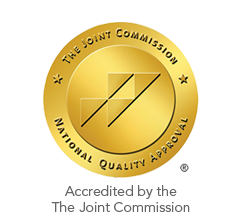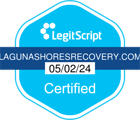Percocet Addiction and Abuse
The Centers for Disease Control and Prevention (CDC) estimate that the total “economic burden” of prescription opioid misuse alone in the United States is $78.5 billion a year, including the costs of health care, lost productivity, addiction treatment, and criminal justice involvement.2
In 2017, an estimated 1.7 million people in the United States suffered from substance use disorders related to prescription opioid pain relievers, and 652,000 suffered from heroin use disorders (not mutually exclusive).3
What is Percocet?
Oxycodone acts on the brain, influencing the body’s feelings and responses to pain. The acetaminophen in this medication is also capable of reducing fever. Percocet abuse is known to result in the same feelings experienced by morphine or heroin but at comparatively far lower levels.
As a short-acting opioid, the medication begins to take effect barely 20-30 minutes after it is consumed. It reaches its peak blood plasma levels rapidly: oxycodone’s peak effects are felt within 30-60 minutes after taking medication. Effects of the medication generally last for somewhere between 2 and 4 hours.
Is Percocet Addictive?
A noticeable decline in school or work performance
Complaining frequently of not feeling well
Sleeping a lot more than usual, or more than necessary
Lack of concern about personal hygiene or physical appearance
Sudden changes in behavior
Frequently seeking more money
Common Questions
Percocet’s Class
Percocet is an opioid narcotic medication, a member of the class of drugs to which morphine also belongs.
Oxycodone, the primary component in the medication, acts as a central nervous system depressant. By acting directly on µ and kappa opioid receptors located in the spinal cord, the brain, and perhaps the tissues as well, oxycodone gives pain relief.
In scientific terms, Percocet latches on to opiate receptors in the central nervous system and numbs the feeling of pain; in the process, it often gives rise to euphoria or a “high.”
In laymen’s language, Percocet, as an opioid, interferes with the way that stimuli or signals are conveyed to the brain through the central nervous system. As a result, the body does not feel pain.
The oxycodone present in this medication is a mu-agonist opioid with an abuse liability quite similar to that of morphine.
Percocet tablets are listed as a Schedule II controlled substance by the USFDA. Schedule II drugs are considered to have a high potential for abuse and rank only below Schedule I drugs. Schedule II drugs are capable of causing physical or/and psychological addiction. Schedule II drugs have medical applications in the U.S. and can be procured by prescription.
While Percocet is often considered to be safer than illegal drugs, its effects on the body are quite similar to those of illicit opioids such as heroin. Just as in the case of heroin, the body forms tolerance very rapidly. As a result, people begin taking progressively larger doses of the drug to enjoy the effects they used to experience with lower doses.
The use or abuse of this medication can lead to the development of typical mannerisms, such as appearing to be on a high or being unusually excitable. On the other hand, some people abuse this medication who tend to appear sedated or excessively tired.
As this medication is a Schedule II drug, it is difficult to obtain without a doctor’s prescription. Some people frequently ask their doctors for fresh prescriptions to get the drug. Others visit different doctors and obtain prescriptions. Some people try to get the drug from the black market or “street.” The street names by which Percocet is known, include Percs, “Paulas,” Roxi’s,” “Blue Dynamite,” “Roxicotten,” and “512S.”
How is Percocet Used?
Tablets contain acetaminophen (325 mg) along with oxycodone (2.5 mg, 5 mg, 7.5 mg, or 10 mg). Generic versions of the drug in tablet form consist of 325 mg or 300 mg of acetaminophen along with 2.5 mg, 5 mg, 7.5 mg, or 10 mg of oxycodone. Each 5 mL of the generic version of the drug in liquid form contains 325 mg acetaminophen and 5 mg oxycodone.
This medication is usually prescribed to be taken every four to six hours, depending upon factors such as pain intensity and duration.
Percocet, in tablet and liquid forms, is ingested by mouth in the dosages prescribed by the doctor. It can be taken with or without food. People who suffer from nausea may find that taking the medication with food helps. Doctors advise patients not to take Percocet along with grapefruit; this combination substantially increases the risk of developing side effects.
When using the medication in its liquid form, it’s advisable to use a medication measuring device instead of a normal household spoon. This makes it possible to maintain dosage accuracy. Some people also chew, snort, or inject Percocet in an attempt to get faster effects. Using medications not as prescribed only raises the risks of adverse effects or could even result in an overdose, leading to possible death. For individuals who misuse medications due to stress or overwhelming emotions, taking an anxiety attack test may help identify whether unmanaged anxiety is contributing to these risky behaviors and signal the need for proper support.
Effects of Percocet?
Short-term
The short-term side effects of using this medication are usually non-serious reactions such as dizziness, light-headedness, drowsiness, nausea, vomiting, and a sedated feeling. These adverse effects are more noticeable in ambulatory patients as compared to non-ambulatory patients. These adverse reactions can be reduced if the patient is made to lie down. Such patients should take care to get up slowly when rising from a chair or bed.
Some of the people who take this drug are known to experience conditions such as euphoria, dysphoria, pruritus, and constipation. Constipation can be controlled to a large extent if the patient consumes dietary fiber and sufficient water, and also exercises regularly. A doctor may also prescribe a laxative to address the problem.
Reactions caused by hypersensitivity to the drug, including skin eruptions and other skin reactions, are also non-serious short-term side effects.
Most of these side effects may abate after the medication has been used for a while. However, if any of these effects continue or worsen, it’s advisable to consult a doctor at the earliest opportunity.
It is rare to come across a very serious allergic reaction induced by Percocet usage. However, the serious side effects include sleep apnea (interrupted breathing while asleep), mental/mood shifts, acute stomach/abdominal pain, troubled urination, and adrenal gland malfunction (which may manifest as loss of appetite, unusual tiredness, weight loss, etc.).
Seeking medical help immediately is vital for any of the very serious side effects such as:
Fainting
Seizures
Shallow breathing
Severe drowsiness
Difficulty waking up
Liver damage
Kidney failure
Urinary retention
Severe constipation
Lowered testosterone levels in males
Tolerance to the drug
Osteoporosis
Immune suppression
Is it Possible to Overdose on Percocet?
The total daily dose of acetaminophen should not exceed 4 grams per day. This means that a person should not consume more than 12 tablets of Percocet 2.5 mg/325 mg in a day. Similarly, the maximum dosages for Percocet 5 mg/325 mg, Percocet 7.5 mg/325 mg, and Percocet 10 mg/325 mg users are 10, 8, and 6 tablets respectively.
Anybody exceeding the prescribed dosages is at risk of overdosing and suffering from serious health risks. As this medication is a derivative of morphine, an overdose can potentially lead to death.
Symptoms of overdose include slow or shallow breathing, a slow heartbeat, coma, nausea, vomiting, lack of appetite, sweating, stomach pain, acute tiredness, yellowing of eyes or skin, and darkened urine.
The serious symptoms of overdosing present as passing out or finding it difficult to breathe. Usually, in such circumstances, doctors advise administering naloxone to the patient and summoning an ambulance.
Emergency treatment for a Percocet overdose usually involves injecting an opioid antagonist so that the drug is blocked chemically.
Stopping Use
What is Withdrawal from Percocet Like?
- Increased heart rate
- Hypertension
- Chills
- Nausea / vomiting
- Diarrhea
- Fever
- Anxiety
- Runny nose
- Watery eyes
- Body aches
- Depression
Beginning with flu-like symptoms, withdrawal leads to intense cravings for the medication.
Psychological symptoms of withdrawal can last longer than physical addiction. Withdrawal symptoms begin to set in from twelve to twenty-four hours after the last dosage. These symptoms then go on to peak at around forty-eight to seventy-two hours.
The duration of withdrawal symptoms varies depending on factors such as the duration of individual usage, and the level of tolerance individuals have developed. Normal detox treatments last for around seven days.
However, the psychological impact of dependence or addiction will linger longer and will need to be treated if absolute healing is expected.
The following timeline gives a broad idea of the various symptoms that can be expected at different stages of the detox process:
DAY 1
Since Percocet’s half-life is around 3.5 hours, general withdrawal symptoms can be expected to appear from around 5-8 hours after ingesting the last dose. Initial withdrawal symptoms at this time may include sweating, body aches, goosebumps, runny nose, and watery eyes, chills, and hot flushes.
DAYS 2-3
Percocet withdrawal symptoms usually peak around 2-3 days after the last dose. Along with flu-like symptoms, some of the additional withdrawal symptoms in this phase include abdominal cramping, tremors, nausea, diarrhea, irritability, anxiety, insomnia, and fatigue.
DAYS 4-7
By this time, the intensity and severity of the physical symptoms begin to subside. From here onwards, strong cravings may occur. At this stage, it becomes important to provide counseling and psychological help to support healing from dependence and encourage ongoing abstinence from the drug.
Treatment for Percocet Dependence
Depending upon the intensity and duration of the addiction, the physician may recommend that the patient access treatment as either an inpatient or an outpatient. Usually, inpatient treatment is prescribed for Percocet detox; this is more effective because it allows constant monitoring and care. This is particularly important in the initial phases of the detox treatment because the patient is particularly vulnerable to sudden cravings and is in danger of reverting to their habit. Moreover, the immediate effects of withdrawal can be quite severe in some cases, necessitating immediate medical attention which is possible only at a medical center. Inpatient treatment may last for around a week.
The Course of Treatment
The patient is then administered medically managed detox program. In this phase, the patient is prescribed certain medications, in specified dosages, to help overcome the physical symptoms of drug withdrawal. Since Percocet addiction treatment is similar to the treatment of most opiate addictions, medications like methadone or buprenorphine are usually prescribed to help address withdrawal symptoms.
Once the physical symptoms produced by withdrawal subside and the drug is successfully cleared out of the body, it’s time to provide the patient with counseling to prevent a possible relapse. In this phase, the patient is reoriented with the help of private and group therapies, training in life skills, and addiction awareness education. Recovery from this medication resembles that of treatment for prescription opiates like morphine.

 Matthew Beck B.A, M.A, LMFT
Matthew Beck B.A, M.A, LMFT 


